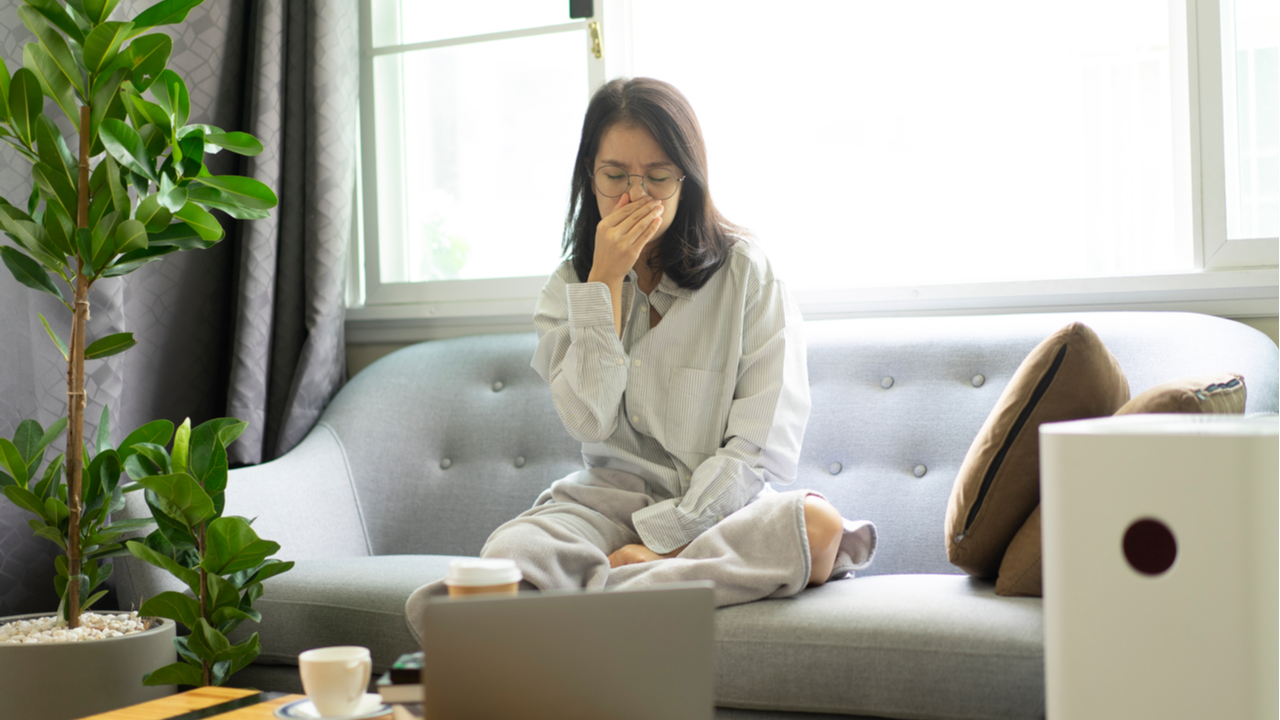Indoor Air Quality in Apartment Buildings Getting New Scrutiny

Apartment communities are putting a priority on indoor air quality to reduce the spread of viruses – including COVID-19 – in and around the property. Badges, signage, or decals proclaiming the property is protected by air filtration or disinfecting solutions is encouraging to residents and prospects who are looking for a safe place to live.
While the pandemic has put a spotlight on what we breathe in, indoor air quality solutions have always had a place in businesses and apartment buildings. Indoor air is scientifically proven to be five to ten times dirtier than outdoor air. Dust, dander, pollen, smoke, mold, bacteria, and viruses are commonly concentrated indoors.
In addition, gases from cleaning products or building supplies, known as VOCs or volatile organic compounds, add to poor air quality. This has become particularly relevant since apartments have begun doing frequent deep cleans with powerful cleaning agents to prevent the spread of the coronavirus.
Air movement improves indoor air quality
A variety of factors including temperature and humidity affect air quality, but it can be improved by changing air movement. Hourly air changes within a space using air filtration and purifiers make for healthy air by reducing the spread of aerosol droplets that carry viruses, says Ryan Donovan, Sr. Category Manager/Indoor Air Quality at Ferguson Build.
Since March 2020, Donovan has witnessed increased demand for air quality solutions as multifamily properties strive to provide residents, guests, and employees the cleanest air possible.
“There are a lot of conversations regarding indoor air quality right now,” says Donovan. “One of the really important things that has come to light is the significance of adding hourly air changes to circulate and treat air either through filtration, ventilation or purification.”
Historically, air treatment for large areas has been left to expensive HVAC systems. But portable, plug-and-play air quality machines that are low on maintenance and high on airborne particulate removal are gaining attention. They are a low-cost solution that is highly effective in improving indoor air quality. Most purifiers are capable of particle efficiency at 99.97 at .3 microns, but some have an efficiency of 99.99% at .1 microns and one even offers 99.99% efficiency at .007 microns.
“The common area where people gather is one of the most important places to address at this time,” Donovan says.
An array of affordable air quality products are available through RealPage’s eSupply. The Spend Management solution is a one-stop shop for multifamily operators who need critical supplies and services to keep properties in tip-top shape.
Portable systems versus HVAC
An effective way to remove airborne contaminates is ActivePure technology, which keeps air moving so germs and viruses don’t linger. The process of combining ultraviolet (UV) light with a photo catalytic cell in lightweight, portable machines improves air quality most effectively in spaces of 1,200-1,500 square feet.
Heavier-duty products that combine filtration and air purification through HEPA filtration technology improve air quality in larger spaces, including conference rooms and fitness centers. HEPA filtration units require annual filter changes.
Small machines typically cost $250-$300 each; larger units that cover more area can command $500 or more.
Portable air quality systems have an advantage over adapting existing HVAC with filtration and purification components. Converting central heating and air systems can be challenging, especially in older buildings, and the result isn’t as efficient, Donovan says.
Whole-house systems incorporate filters at air intake points and in air ducts, requiring installation by certified HVAC technicians, which drives up costs. Duct-based whole house purifiers are especially expensive to install and are generally inefficient because the system cycles on and off.
Ultimately HVAC systems are designed to heat and cool, not purify air.
Portable air quality machines that move air
Stand-alone machines can better move air in specific spaces and reduce the risk of viruses and other particles that are often trapped in filters.
“Viruses get caught in filters but they’re not actually eliminated,” Donovan said. “In order to catch a virus particle and eliminate it, you really want to have the best filtration and technology possible from a portable unit.”
The EPA recommends using portable air cleaners to supplement increased HVAC system ventilation and filtration, especially in areas where adequate ventilation is difficult to achieve. Directing the air current so that it does not flow past one person to another reduces the potential spread of droplets that may contain infectious viruses.
Portable air cleaners should be chosen based on the size of the room in which they will be used and should be rated for High-Efficiency Particulate Air (HEPA), CADR or the ability to remove most particles in the size range below 1 um.
RealPage eSupply provides the multifamily housing industry pre-negotiated prices and qualified vendors to keep maintenance staffs fully stocked and prepared. Learn more about eSupply GPO at https://www.realpage.com/expense-management/procurement-suite/ or contact us at eSupply@RealPage.com.